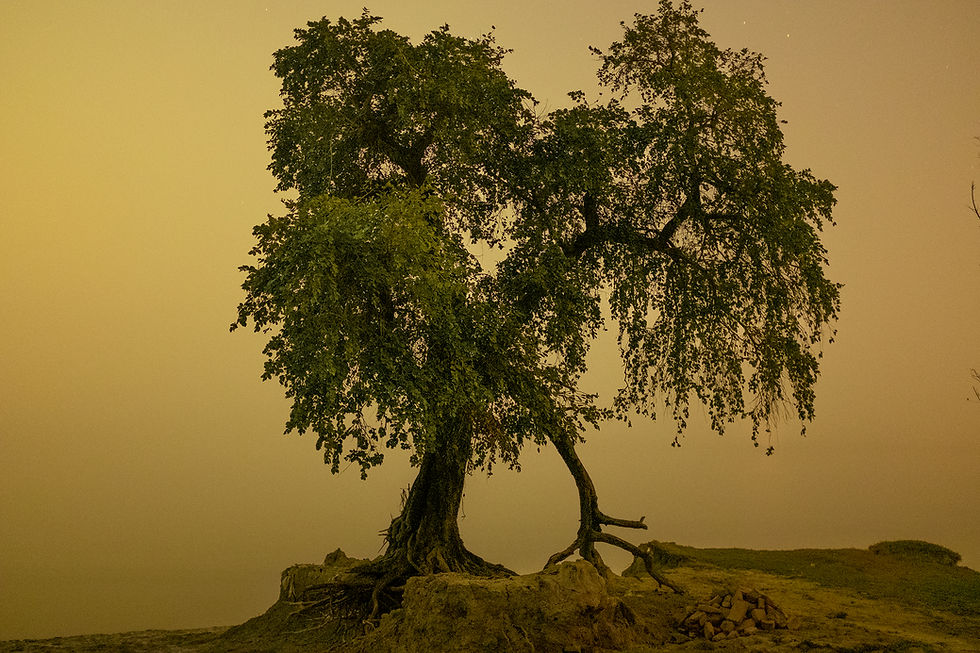Sutirtho Roy
- Posthuman Art Network

- Mar 24, 2022
- 3 min read
Updated: Mar 29, 2024
Sutirtho Roy: I am an Early Career Scholar who has co-authored an anthology of poetry and written a novel that has garnered positive reviews from Inkitt and Webnovel. In my free time, I do figure photography and webcomic designing on my Instagram page https://www.instagram.com/dinotoy.com, which I have slowly started integrating with my research areas. I have served as a panelist at international workshops pertaining to post-humanism, and my papers have been selected for publication in journals like Routledge, Cambridge, BRILL, Springer, and Lexington Books. Through my research, I aim to recognize the various potentials of storytelling and linguistic frameworks to advocate for non-human animal welfare, along with social upliftment and environmental conservation. As such, my primary research area centers on post-human/ post-anthropocentric ways of depicting non-humans, or critiquing the anthropocentric ways of their depictions through the analysis of different media and theoretical paradigms.
Website and Links:
Proposal:
Narratives, Non-humans and the Post-human Body
The portrayal of non-human animals in media has historically exhibited the potential to reflect as well as impact the public perception of the animal in question. This is evident in the changing equestrian laws after the publication of Black Beauty and how nation-wide consumption of pork was affected by the popularity of the film Babe. The endearing features of the talking piglet Babe on screen helped to serve his case, but such a task is made doubly difficult when we look at arthropods, pests, predators and other creatures which have received the short end of the stick in literary depiction/ cinematic depiction. In fact, the amount of affection or care a particular kind of non-human received is often directly tied to how favourable it is in the eyes of human beings. This has been proven by an experiment by Wojciech Malecki and her team, through the construction of different narratives featuring nine different animal species as their protagonists (Małecki 2019, 115) According to Steve Nash, this causes hierarchies of power to form which affect conservation-oriented outcomes for the depicted animals in question; as such, mammals and birds are much more likely to evoke empathy through their suffering than insects (Nash 2004, 487-494).
Such biases point to an inherent speciesist sense which is highly anthropocentric, in that the value of a creature is often judged by the degrees to which it is favourable in the human eye. Abby Walthausen points to this very organizing assumption of kid’s media, where a prerequisite of being loved is an entity’s perceived cuteness, thereby ensuring that “sweet and round and loveable” (Walthausen 2020) puppies are often favoured over arachnids. The scenario is worsened by the fact that several reptiles, amphibians, perceived pests and arthropods are often difficult to anthropomorphize and feature very little in animated films. Recently, however, this anthropocentric status quo is being increasingly challenged by the very post-human desire to accommodate the voices of the non-human subalterns which have received less recognition in media.
As such, the purpose of my study is twofold. Firstly, I hope to look at the body of contemporary media, both written and cinematic, to look at instances where non-humans which generally elicit discomfort, repulsion or abject horror are portrayed in a positive light. To that extent, I hope to answer the following questions:
• How positive or nuanced is the said portrayal?
• What was the public perception of such creatures, before and after exposure to the said media?
• What are the possible features which may have had led to this changed?
Secondly, I hope to analyse these findings, and use the same in my own work. Using dioramas featuring small figurines, I had earlier managed to look at the responses of my followers with regards to parasitic animals (https://www.instagram.com/p/CILhKC-F8kq/?utm_medium=copy_link), spiders (https://www.instagram.com/p/CO-qscKFOhO/?utm_medium=copy_link), endangered creatures (https://www.instagram.com/p/BuSk-Vzltit/?utm_medium=copy_link) and more. These non-human creatures, too, become, products of the human gaze, with their bodies, anthropomorphic expressions, and construction of faces being distinct embodiments of the human gaze, often meant to arouse a particular emotion in viewers. However, I hope to uncover how such a gaze might be mediated in more positive manners which benefit the non-human in question. I hope to create more such works, based off the findings of my research and delineate how such media might function in order to promote post-anthropocentric, pro-welfare sentiments among consumers. Finally, I hope to look at the implicit anthropocentrism that may have had crept into my own work, and look at possible solutions towards getting around the same.
References
Małecki, Wojciech, Piotr Sorokowski, Boguslaw Pawlowski, and Cieński Marcin. 2020. Human Minds and Animal Stories: How Narratives Make Us Care about Other Species. London, United Kingdom: Routledge.
Walthausen, Abby. 2021. “Finding the Right Face for Charlotte in 'Charlotte's Web': Abby Walthausen.” Catapult. Catapult. https://catapult.co/stories/abby-walthausen-illustrations-eb-white-charlottes-web.
Nash, Steve. 2004. “Desperately Seeking Charisma: Improving the Status of Invertebrates.” BioScience 54, no. 6: 487–94. https://doi.org/10.1641/0006-3568(2004)054[0487:dscits]2.0.co;2. s


Comments